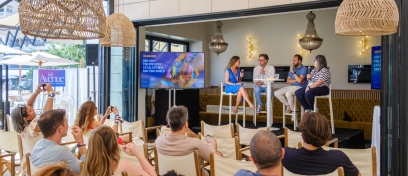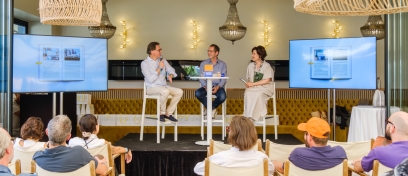Blurring the lines between retail and leisure: OOH in the shopping malls of the future
SHOPPING MALLS HAVE EVOLVED WITH CHANGING CONSUMER PATTERNS
Shopping malls have existed since Ancient Rome, and have since spread across the globe as places to trade both goods and culture. For instance, the Grand Bazaar in Istanbul was built in the 15th century and is still one of the largest covered shopping centres in the world, holding more than 4,000 shops.The first modern shopping mall as we know it was the Southdale Center in Minnesota, USA, opened in 1956. During this time, as the population expanded in cities across the globe and car ownership rose, out-of-town shopping centres began to emerge in the suburbs, changing global consumer’s shopping patterns forever.
Fast forward to today’s retail landscape, and we are now facing a far more complex scene. The rise of e-commerce worldwide means that consumers increasingly choose the ease and convenience of shopping on the go. Yet, data shows that consumers still have an appetite for traditional retail spaces like shopping malls, with over half of global consumers considering it an enjoyable experience.
In this light, shopping malls are still important in today’s retail landscape, but consumer’s expectations of them have changed. Understanding what is driving shoppers and putting their needs and desires at the core of the overall shopping experience will be essential to ensure the success of shopping malls around the world.
CONSUMERS DEMAND MORE ENGAGING EXPERIENCES FROM BRANDS AND SHOPPING MALLS
A study by the International Council of Shopping Centres found that three-quarters of global Gen Z shoppers (those born between 1995 and 2009) said going to a brick and mortar store was a better experience than online. Contrary to the assumption that internet-natives would shun physical experiences, for Gen Z, shopping malls represent an escape from the digital world, as they appreciate the social and experiential aspects of browsing and shopping at physical stores. This preference of traditional over digital is also true for this generation's media consumption, as a study by Millward Brown found that 55% of Gen Z favour OOH ad formats, compared to just 34% choosing mobile display.Furthermore, a study by Global Data shows that 80% of average global shoppers use leisure or food service facilities when visiting shopping centres, with the number increasing to 94% when looking at the younger 18-34 demographic. It’s clear that it’s no longer enough for malls to be places for just shopping, they need to offer the engaging experiences that today’s consumers crave, blurring the lines between hospitality, leisure and retail to compete with an increasingly fragmented retail landscape.
Some shopping centres are already catching up with consumer expectations. Last year, the global shopping centre Westfield presented their vision for the future of retail with its Destination 2028 concept. The proposal re-imagines the future shopping mall as a hyper-connected, micro-city which weaves in experience, leisure and wellness with shopping. From sensory greenery to reading rooms, the retail stores of the future will be powered by data and AI-powered technology, for a less stressful, more personalised visit.

OOH IN SHOPPING MALLS REACHES SHOPPERS IN THEIR ACTIVE ENVIRONMENT, BOOSTING THE EFFECTS OF MOBILE
As shopping malls evolve to become holistic destinations, they will no longer be seen as just ‘shopping centres’ but 'dining, leisure and entertainment' centres, therefore, capturing younger segments who seek to be stimulated. Indeed, almost half (49%) of global 18-24-year-olds visit shopping centres twice a month or more, compared to just under a third (32%) of average global consumers. Considering that global data by Kantar Millward Brown shows that these younger consumers increasingly reject advertising, this is a significant insight highlighting advertising within shopping malls as an important channel opportunity for brands to communicate with this hard-to-reach segment.
For this audience, OOH is the perfect channel to boost the effects of mobile advertising. A global study by Facebook showed that in combination with Facebook advertising, OOH improved business results by 13% more than expected. For brands, this means that they can be present in both mobile channels as well as OOH channels within the physical retail space, increasing consideration from the beginning (when they are browsing online) to the end of the purchase journey (when they are at the mall).
For example, in a recent campaign luxury brand Moncler, advertised in Singapore’s Ion Orchard Mall, where they opened their first South East Asia store in 2015. With over 50 million visitors a year, Ion Orchard Mall welcomes a wide range of consumers and provides them with an engaging shopping experience. The prime location not only gave Moncler an opportunity to influence consideration in consumers one last time before they shop but also allowed the brand to benefit from positive brand associations that the mall granted them.

Consumer’s expectations of a holistic destination for shopping centres also apply to expectations of holistic brand communications. OOH within shopping malls can bring the two together by providing immersive experiential or dynamic opportunities that target consumers at the right time and place.



